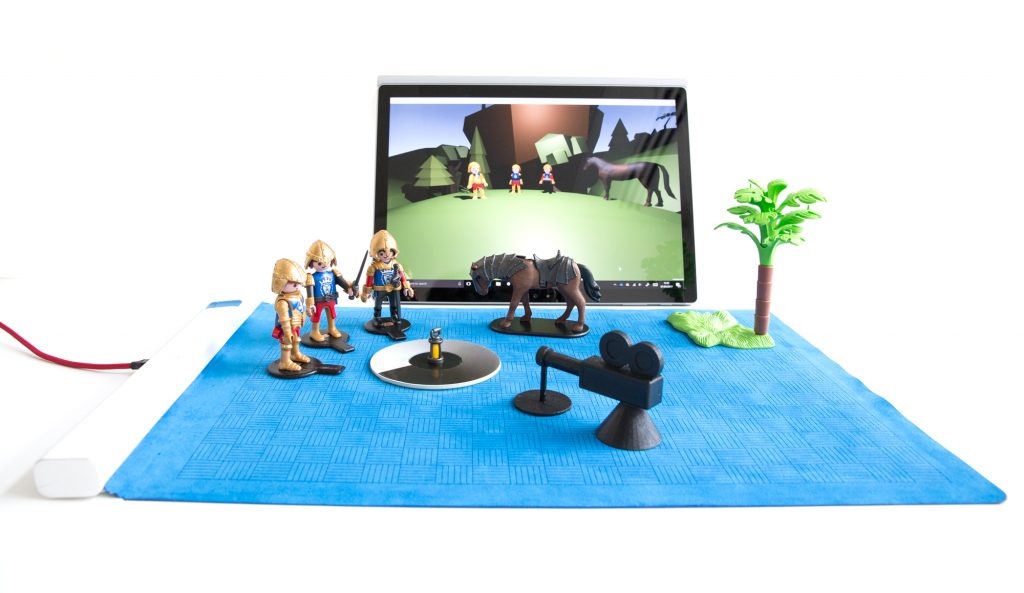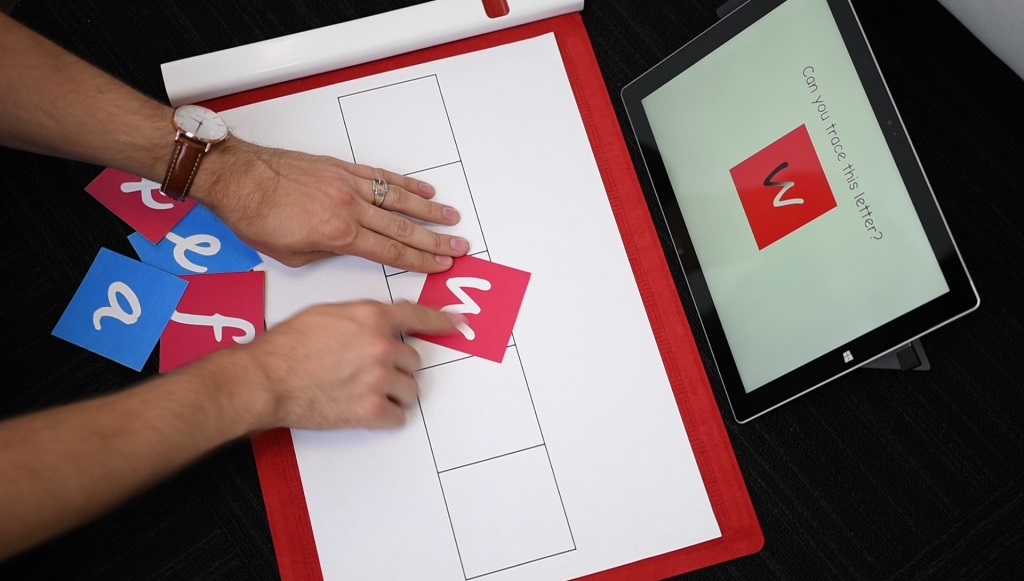Microsoft’s Project Zanzibar blends digital and physical worlds to create something truly special
Going further than augmented reality

Microsoft has long been looking at ways to merge the physical world with the digital one, such as its Hololens and Windows Mixed Reality headsets, and now it's revealed Project Zanzibar, potentially its most exciting attempt yet.
Project Zanzibar is a portable mat that comes with NFC (near field communication) functionality – the same technology that allows you to quickly pay in shops and restaurants by tapping your smartphone on a payment device.
The mat also has capacitive sensing to detect multi-touch gestures and movement, allowing it to identify physical objects placed on it.
In a blog post detailing the project, the research team behind it explained where their inspiration came from. “We began with a simple thought," they explained. "What if we could blur the divide between the physical and digital worlds? What if you could play with toys and cards and blocks, while watching your actions come alive onscreen?”

Play time
The blog also outlines some potential uses for Project Zanzibar, which the team envisions could drastically change the way we interact with PCs.
Playing with toys is one such example. Standard toys could be placed on the mat and given globally unique IDs, enabling data to be stored for each object.
While combining physical toys with NFC chips and augmented reality is nothing new (the popular Skylanders, Lego Dimensions and Nintendo’s Amiibo toys all use variations of the technology), what’s exciting about Project Zanzibar is that it can work with any off-the-shelf toy, not just specially made (and expensive) figurines.
Sign up for breaking news, reviews, opinion, top tech deals, and more.
In tests, kids played with the toys on the mat, using a tablet running a movie making app to create stop-motion videos.
As the blog explains: “Project Zanzibar invites children to bring their toys into an interactive experience and watch them come alive through sound, visuals and special effects. The team had observed kids spending hours making stop-action movies to share online.”
The mat can also detect the location of toys on the mat, and by sensing where certain toys are, and if they are near other toys, can broadcast lines of dialog, telling a story as the children play.
While some people may be concerned that Project Zanzibar is aiming to stop kids using their imaginations when playing, and instead use a computer to create sounds and special effects, the researchers claim to be taking a different angle by changing how children interact with PCs.
Many kids spend more time interacting with a 2D screen than playing with physical toys, and the Project Zanzibar team want to change this.
As Haiyan Zhang, a Project Zanzibar researcher, says: “The physical world is such a rich place, abundant with dimensionality and materiality. Our vision is to tap into that richness and imbue it with that digital magic and our hope is that Project Zanzibar is a step in that direction.”

Help with learning
The team is also keen to stress the teaching possibilities of Project Zanzibar, inspired by the Montessori Method, a theory developed in the early 20th century by Maria Montessori, which looked at how important physical activity is for helping children to learn. “We took traditional Montessori exercises for young children and extended them with digital content and feedback using Project Zanzibar,” the blog explains.
The team is also looking at creating a range of educational apps, which include spelling and coding lessons, that use physical cards and allow the children to use natural, tactile, actions to interact with the apps.
How does it work?
The blog also delves into how the Project Zanzibar prototype works, including how the NFC technology can detect the position of objects, and how the mat can be rolled up to be easily portable. It can also detect when objects are stacked on each other and in which order, which is all pretty clever.
Items don’t need to be placed directly on the mat, which can detect NFC objects from 30mm above. It can also recognize gestures made above the mat, such as drawing shapes in the air. The mat connects to a computer via USB or Bluetooth.
The team has released a technical paper providing even more information about the project.
It’s all pretty exciting stuff, and we’re looking forward to seeing the fruits of Project Zanzibar’s labors. If it lives up to its potential, it really could change the way we – and our children – interact with computers.
- Will it make our list of the best smart toys for kids of all ages?

Matt is TechRadar's Managing Editor for Core Tech, looking after computing and mobile technology. Having written for a number of publications such as PC Plus, PC Format, T3 and Linux Format, there's no aspect of technology that Matt isn't passionate about, especially computing and PC gaming. He’s personally reviewed and used most of the laptops in our best laptops guide - and since joining TechRadar in 2014, he's reviewed over 250 laptops and computing accessories personally.